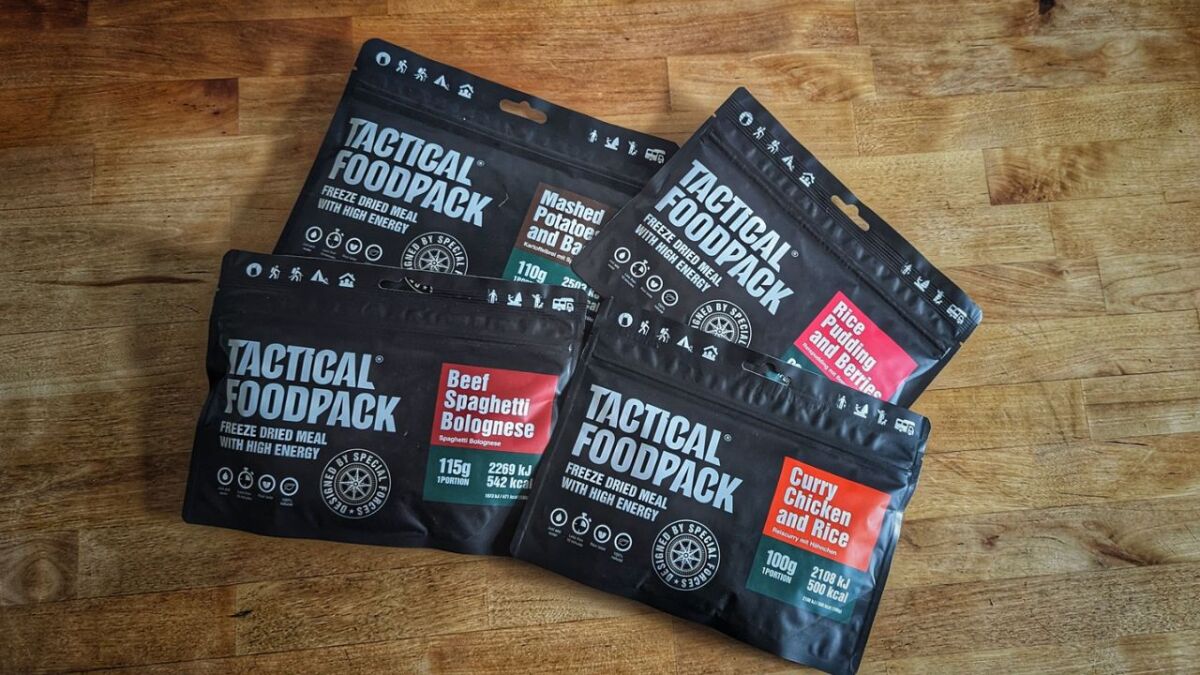
Trekking food
Noun
Meaning
Trekking food refers to the food that is specifically designed and prepared for outdoor activities such as hiking, camping, and trekking. It is lightweight, compact, and easy to carry, making it ideal for long-distance journeys in the wilderness. Trekking food is typically dehydrated or freeze-dried, which helps to reduce weight and extend shelf life. It often includes a variety of meals, snacks, and energy bars that are nutritionally balanced and provide the necessary energy and nutrients for sustained physical activity. Trekking food is an essential component of any outdoor adventure, ensuring that hikers and trekkers stay nourished and energized throughout their journey.

Examples
„I love going on long hikes and exploring the wilderness. One of the most important things to consider when planning a trekking trip is the food you'll bring along.“
„Trekking food is lightweight and easy to carry, making it perfect for long journeys through the mountains.“
„When I go trekking, I always pack a variety of dehydrated meals as my trekking food. They are quick and easy to prepare, and they provide me with the necessary energy to keep going.“
„My friends and I often exchange tips on the best trekking food options. We discuss our favorite brands and flavors, and share recipes for homemade trail mix and energy bars.“
„During a recent trekking trip, I ran out of trekking food and had to rely on foraging for berries and edible plants. It was a great opportunity to test my survival skills and learn more about the local flora.“
„Trekking food is not only about sustenance, but also about enjoying a delicious meal in the great outdoors. There's nothing quite like sitting by a campfire and enjoying a warm meal after a long day of hiking.“
Origin
The word "Trekking food" originates from the English language. It is a combination of the word "trekking," which refers to long-distance hiking or walking in the wilderness, and "food," which refers to any nourishment consumed to sustain life.
The concept of trekking food has its roots in the need for lightweight, portable, and nutritious meals that can be easily carried and prepared during outdoor adventures. It has evolved over time to cater to the specific dietary requirements and preferences of trekkers, hikers, and outdoor enthusiasts.
Trekking food typically consists of dehydrated or freeze-dried meals, energy bars, trail mixes, and other lightweight food options that provide essential nutrients and energy for sustained physical activity. These foods are designed to be easy to pack, quick to prepare, and have a long shelf life.
With advancements in food technology and the growing popularity of outdoor activities, the variety and quality of trekking food have significantly improved. Today, there are numerous brands and options available, catering to different dietary restrictions, tastes, and preferences.
Whether you are embarking on a multi-day trek, camping trip, or any outdoor adventure, having the right trekking food is essential for maintaining energy levels and enjoying your time in the wilderness.
Synonyms
Hiking food, Backpacking food, Trail food, Outdoor meals, Expedition food, Camping food, Wilderness food, Adventure food
Antonyms
Fast food, Processed food, Junk food, Convenience food, Takeout food, Microwaveable food, Pre-packaged food, Canned food
Relatives
Hiking food, Backpacking food, Trail food, Outdoor meals, Camping meals, Wilderness cuisine, Expedition food, Adventure food
Historical and cultural importance
Trekking food has a long history of cultural significance, especially in regions where outdoor activities and exploration are deeply ingrained in the local culture. In countries like Nepal, India, and Peru, trekking food plays a vital role in sustaining hikers and mountaineers during their expeditions in the rugged terrains of the Himalayas and the Andes.
In these regions, trekking food is not just a means of sustenance, but also a reflection of the local culinary traditions and flavors. Traditional dishes like dal bhat (lentil soup with rice) in Nepal, or quinoa-based meals in Peru, have become staples for trekkers, providing them with the necessary energy and nutrients to tackle the challenging trails.
Furthermore, trekking food has also evolved over time to cater to the specific needs and preferences of outdoor enthusiasts. With advancements in food preservation techniques and packaging, lightweight and compact meals have become popular choices for trekkers, allowing them to carry sufficient food supplies without adding excessive weight to their backpacks.
Moreover, the rise of adventure tourism and the increasing popularity of long-distance hiking trails, such as the Appalachian Trail in the United States or the Camino de Santiago in Spain, have further contributed to the cultural relevance of trekking food. These trails attract hikers from all over the world, creating a diverse community of outdoor enthusiasts who share a common appreciation for nature and the challenges of trekking.
Overall, trekking food not only serves as a practical solution for sustaining oneself during outdoor adventures but also represents a cultural connection to the regions where these activities take place. It embodies the spirit of exploration, self-reliance, and the appreciation for the natural world.
More information about the term Trekking food
Trekking Food: Fueling Your Adventures in the Wilderness
When embarking on a trekking adventure in the wilderness, one of the most important considerations is the food you bring along. Trekking food plays a crucial role in providing the necessary fuel and nutrition to keep you energized and sustained throughout your journey. In this article, we will explore the different types of trekking food, their benefits, and some tips for choosing the right options for your outdoor expeditions.
Types of Trekking Food
1. Dehydrated Meals: Dehydrated meals are a popular choice among trekkers due to their lightweight and easy preparation. These meals are typically freeze-dried or dehydrated, allowing them to retain their nutritional value while reducing weight and bulk. They come in a variety of flavors and can be rehydrated with hot water, making them a convenient option for on-the-go meals.
2. Energy Bars and Snacks: Energy bars and snacks are compact, lightweight, and packed with nutrients. They provide a quick and convenient source of energy during long treks. Look for options that are high in protein, carbohydrates, and healthy fats to keep you fueled and satisfied.
3. Trail Mix and Nuts: Trail mix and nuts are excellent options for snacking on the trail. They are rich in healthy fats, protein, and fiber, providing a sustained source of energy. Choose a mix that includes a variety of nuts, dried fruits, and seeds for a balanced and flavorful snack.
4. Instant Noodles and Soups: Instant noodles and soups are lightweight and easy to prepare, making them a popular choice for trekkers. They provide a warm and comforting meal option, especially during colder expeditions. Look for options that are low in sodium and high in nutrients to ensure a healthy and satisfying meal.
Benefits of Trekking Food
1. Portability: Trekking food is designed to be lightweight and compact, allowing you to carry enough supplies without adding excessive weight to your backpack.
2. Nutritional Value: Trekking food is specially formulated to provide the necessary nutrients and energy for outdoor activities. They are often fortified with vitamins and minerals to support your body's needs during strenuous physical exertion.
3. Convenience: Trekking food is easy to prepare and requires minimal cooking equipment. This convenience allows you to focus on your adventure rather than spending excessive time on meal preparation.
4. Long Shelf Life: Most trekking food has a long shelf life, making it suitable for extended trips or emergency situations. This ensures that you have access to nourishing meals even in remote areas.
Tips for Choosing Trekking Food
1. Consider Nutritional Needs: Assess your nutritional needs and choose trekking food that provides a balanced mix of macronutrients (carbohydrates, proteins, and fats) as well as essential vitamins and minerals.
2. Read Labels: Pay attention to the ingredients and nutritional information on the packaging. Look for options that are low in added sugars, sodium, and artificial additives.
3. Try Before You Trek: Experiment with different trekking food options before your trip to ensure that you enjoy the taste and texture. This will help prevent any unpleasant surprises during your adventure.
4. Consider Special Dietary Needs: If you have any dietary restrictions or allergies, make sure to choose trekking food that accommodates your specific needs. There are plenty of options available for vegetarians, vegans, and those with gluten or lactose intolerance.
Remember, trekking food is not only about sustenance but also about enjoying your outdoor experience to the fullest. Choose food that you enjoy eating and that provides the necessary fuel to keep you going on your wilderness adventures.
Back to overview

